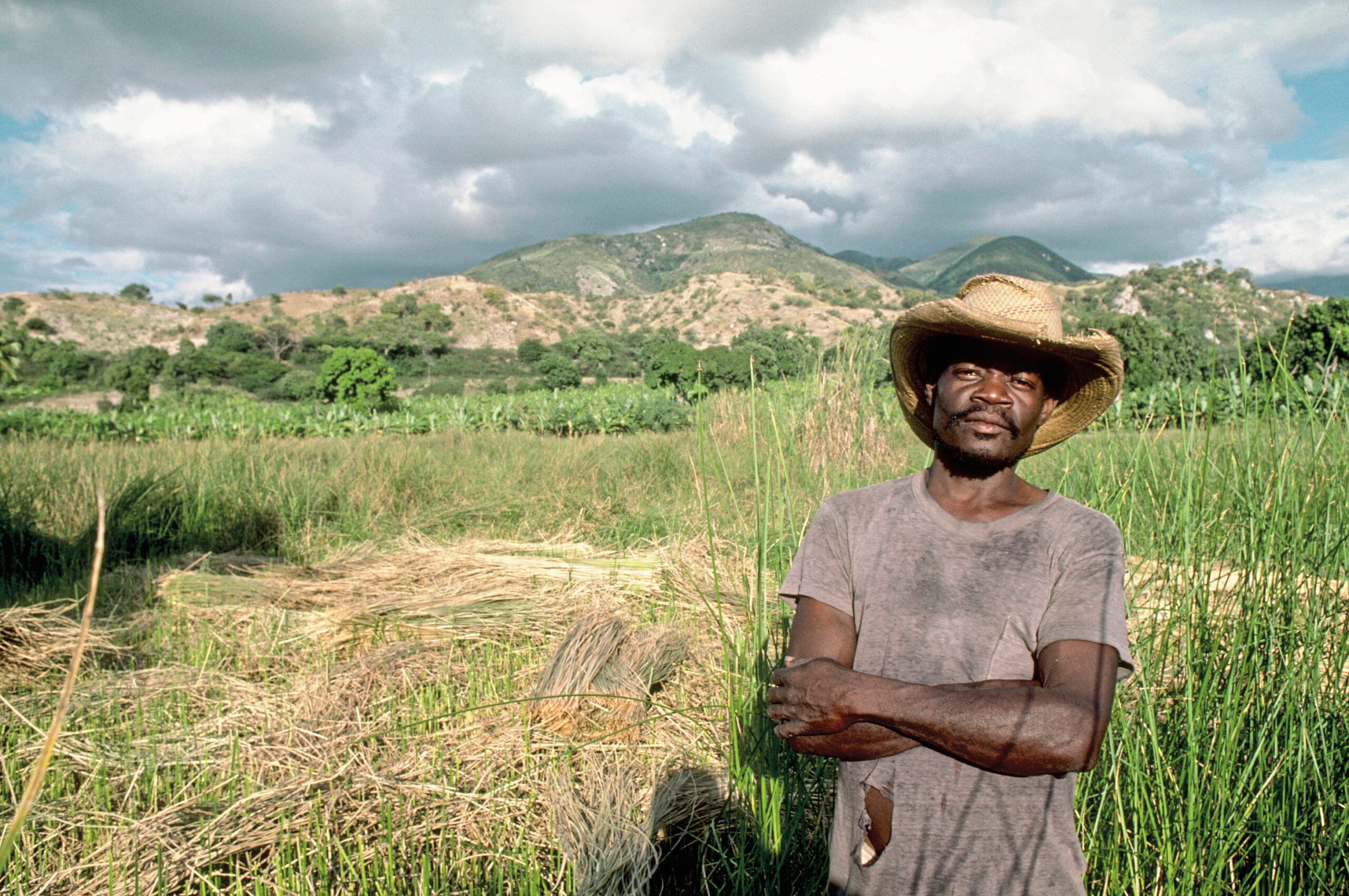This article is adapted from AQ’s special report on the Summit of the Americas
PORT-AU-PRINCE—The earthquake that battered southern Haiti in August 2021, followed two days later by a devastating tropical storm, revealed once again the fragility of our environment and the precarious conditions of our people. These twin catastrophes occurred amid a political vacuum, a constitutional and judicial imbroglio, an economic meltdown, and continued clashes among gangs who control much of our national territory. The current makeshift government had little to no capacity to intervene, leaving the field to international donors and agencies that until today have failed to make much difference. A few local organizations were able to respond rapidly, but for the most part, the post-earthquake situation has left the population unable to fend for themselves.
Leaders gathering at June’s Summit of the Americas face fundamental questions: What to do about Haiti? Should the international community continue to pour in millions of dollars in aid that we know will be misspent or wasted? Or turn its back and give up hope?
There is another path.
This path begins with a detour through history, and a recognition of some of our most painful legacies. Shortly after the U.S. military occupation of Haiti began in 1915, the Marines reintroduced the corvée, a policy reminiscent of slavery with roots in the 19th century, which required citizens to work without compensation on infrastructure and other projects. These outside rulers considered local peasants and small landholding farmers to be backward and unfit for civilization, and made a racist choice to use their bodies as cheap, unskilled labor in Haiti and in the region. The first major forced migration of Haitians, mostly peasants, was organized in the 1920s for the benefit of U.S. sugar companies in Cuba and the Dominican Republic. We see the consequences to this day, in the visceral rejection of Black Haitian migrants on U.S. shores and on U.S. borders, including the awful scenes of violence against our people in 2021 under a highway bridge in Del Rio, Texas.
This background illuminates the many factors conspiring against Haitians in rural areas as they fought to achieve freedom and independence. In her book Taking Haiti, Military Occupation & the Culture of Imperialism, 1915–1940, U.S. scholar Mary Renda shows her profound understanding: “Haitian peasants had struggled to establish a peasant economy and to resist forces urging them toward plantation wage labor. Picking coffee and growing food for themselves and for the market in their own garden plots afforded greater levels of control over their lives than plantation agriculture would allow. … They worked body and soul for economic independence.”
Put another way, today’s Haitian peasants are the descendants of a population of former slaves who fought for the country’s independence, but soon afterward were marginalized for refusing to return to the plantation system and work for miserable wages. The hard truth is that this legacy has never been accounted for in public policies or international agendas.
The agricultural sector in Haiti is made of about 1 million smallholder farmers, men and women, working on small plots of about 2.5 acres with little more than the colonial-era hoe. There are also a few young entrepreneurs who found niche markets in crops such as cocoa, coffee, vetiver and other essential oils, and a few products for internal consumption. There is a very limited number of agroindustry outfits on plots of approximately 100 acres of land. They all work on a diversity of products, but productivity remains low. The added value to the economy created by the agricultural sector is about 20% to 25%. There are three agricultural campaigns and in high season they can mobilize as many as 5 million people, representing 60% of employment.
The contribution of this sector to the GDP is about $76 million per year and has barely fluctuated since 2014. Persistent constraints limit its growth and the well-being of the smallholder farmers and their families. These include: a lack of long-term investment, lack of agricultural and rural infrastructure, inadequate technological means, climate change and its effect on the environment, and others. All this amounts to the historical abandonment of this productive primary sector by the public sector and international agencies.
No money for small farmers
A 2019 study by USAID makes clear how Haiti’s small farmers are not included in traditional financial and economic mechanisms that might lead to their growth. The USAID report stated that “commercial banks and development finance institutions use the incentives provided by BRH (Haiti’s central bank) to lend to well-established processors of agricultural goods. As of September 2018, commercial bank lending to the primary sector of the economy accounted for 0.51% of their total loan portfolio. In March 2019, this number increased to 0.79%, representing a 55% jump. This increase is thought to be primarily due to funds lent out by the micro-finance arms of commercial banks, and to firms exporting agricultural goods.”
The report continued: “Farmers, on the other hand, are left with very few options besides obtaining loans from the microfinance sector at high interest rates or advances from market intermediaries and processors. A survey of the microfinance sector in Haiti published in 2018 shows that only a small proportion of their loan portfolio, 14%, went to production.”
That helps explain why Haiti is the poorest country in the hemisphere.
Yet, despite this grim picture, the potential is there for food production that can have a positive impact on food insecurity. There are pockets of hope that need to be sustained so that production can reach much higher levels and enhance the entire Haitian economy. The urgency today is not for short-term projects that can maintain the smallholder families in precarious conditions. Instead, we should support much longer-term investment, in local seed production for example (seeds are largely imported from the United States), and in the whole value chains of specific sectors with added value, which can be highly significant to food production and niche exports.
There are risks, of course, but why should the smallholder farmer living in subsistence be the only one bearing the consequences? Why not also bet on local organizations that have a proximity to, and experience with, the farmers and can ensure that funds are used properly and accounted for? In my personal experience the smallholder farmer sector is culturally resilient, capable of extraordinary courage, inventiveness and stamina when allowed and encouraged to produce for themselves and their families.
Rather than launching large-scale but short-term projects where international intermediaries absorb a major portion of the funds, the Haitian rural world needs small-scale investments that are sustained over a long time span with encouragement for local markets, school canteens and small-scale tourism outfits. There are private and nonprofit Haitian relays on the ground capable of providing careful interface with smallholder farmers, organizations with sensitive attention to an appropriate rhythm of growth.
At the more institutional level, any support that can help Haitian universities develop their scientific capacities to create the necessary links with the agricultural sector and help the farmers develop their sanitary and phytosanitary standards is also an area of concern in times of climate change. Haitian universities are beginning to partner with U.S. and Latin American universities to improve research capacities and to extend support to rural communities. That is a promising trend.
A new beginning
We are no longer in the days of the “big stick,” the gunboat, the dollar and the missionary diplomacy advocated by successive U.S. presidents at the beginning of the 20th century to establish their hegemony in the Western Hemisphere. Yet we cannot help asking ourselves why the political and economic choices made in the course of history to this day seem to always be detrimental to our country.
And more persistently, why in a small country like Haiti is it still not possible to educate, to create decent jobs, to acknowledge the fundamental role of smallholder farmers, men and women, in the economy and invest with them to fight food insecurity and help mitigate natural disasters?
This is a chance to invest in areas that really matter, that can open perspectives to millions of young men and women who could finally project themselves in the future of the country.
Paradoxically, catastrophes also offer opportunities. What happened in Haiti’s south is an eye-opener. Science keeps warning us that this could happen anywhere else in the country with graver consequences, more suffering, and probably more migration.
Now is the time to change the way we look at our territory, our population, our habitat. We need to build scientific capacities to educate, to empower and to bridge the social divide that has for too long marginalized millions of men and women.
This is the real audacious political agenda for the next generation that I dream of for our country.









